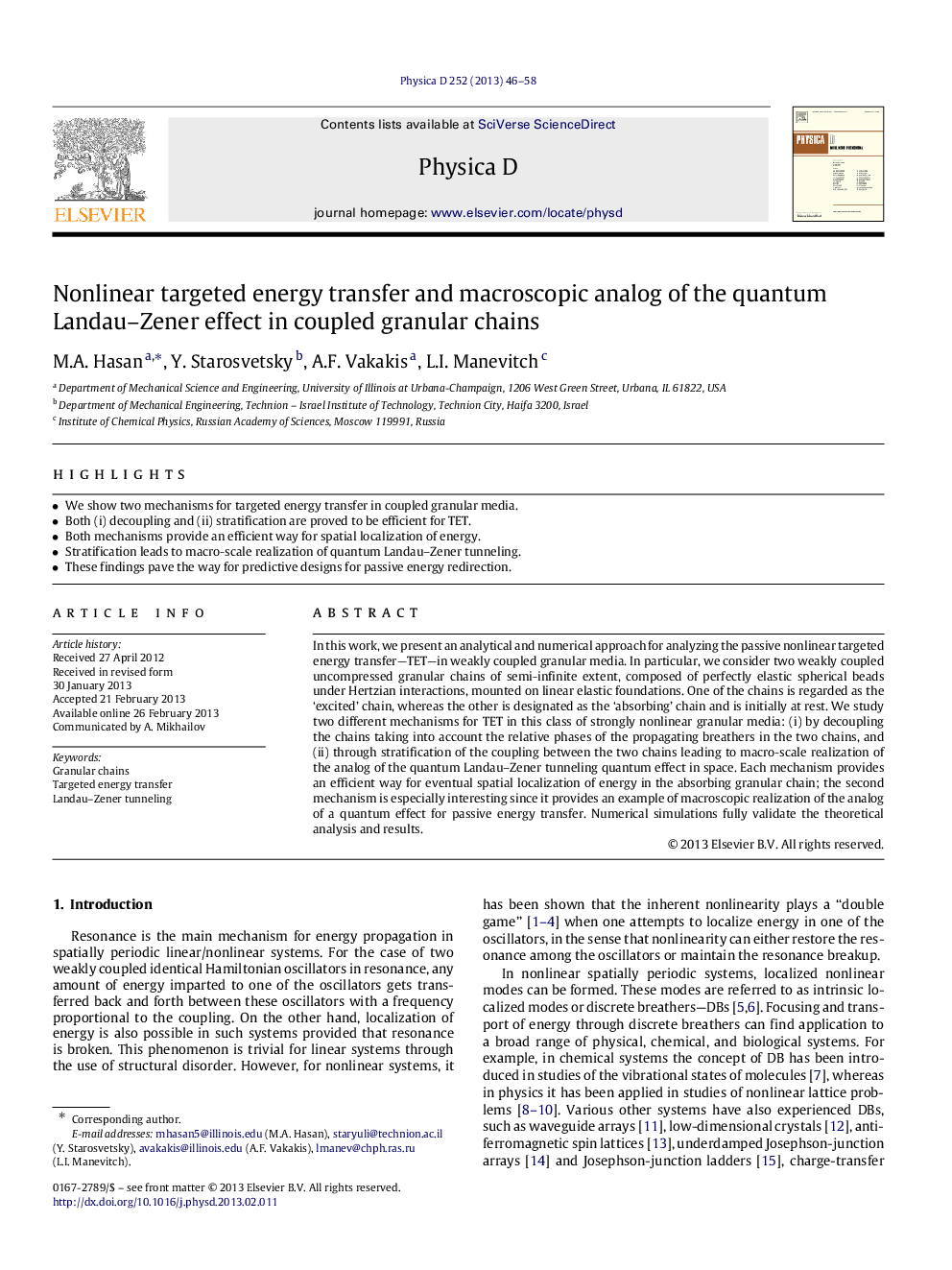| Article ID | Journal | Published Year | Pages | File Type |
|---|---|---|---|---|
| 1896519 | Physica D: Nonlinear Phenomena | 2013 | 13 Pages |
•We show two mechanisms for targeted energy transfer in coupled granular media.•Both (i) decoupling and (ii) stratification are proved to be efficient for TET.•Both mechanisms provide an efficient way for spatial localization of energy.•Stratification leads to macro-scale realization of quantum Landau–Zener tunneling.•These findings pave the way for predictive designs for passive energy redirection.
In this work, we present an analytical and numerical approach for analyzing the passive nonlinear targeted energy transfer—TET—in weakly coupled granular media. In particular, we consider two weakly coupled uncompressed granular chains of semi-infinite extent, composed of perfectly elastic spherical beads under Hertzian interactions, mounted on linear elastic foundations. One of the chains is regarded as the ‘excited’ chain, whereas the other is designated as the ‘absorbing’ chain and is initially at rest. We study two different mechanisms for TET in this class of strongly nonlinear granular media: (i) by decoupling the chains taking into account the relative phases of the propagating breathers in the two chains, and (ii) through stratification of the coupling between the two chains leading to macro-scale realization of the analog of the quantum Landau–Zener tunneling quantum effect in space. Each mechanism provides an efficient way for eventual spatial localization of energy in the absorbing granular chain; the second mechanism is especially interesting since it provides an example of macroscopic realization of the analog of a quantum effect for passive energy transfer. Numerical simulations fully validate the theoretical analysis and results.
